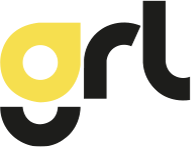Direct Access and Barrister led entities are increasing in the market – the observed effects, so far……
Holistic Change
The legal world has been going through a well documented change these past few years. This is certainly true since the economic crisis of 2008 and the rise of technology is the one most people will be most aware of. However, in the last 10 years there has also been a marked increase in direct instruction of the Bar; I have seen a real rise in not just individuals going direct, but SME’s and corporates instructing the Bar direct, too. The realisation from consumers (not just in legal) is that they want to be in control and want to know they are getting value for money. This ethos applies in not only in the world of the individual, but also the corporate world and is filtering down (for example, the role of the GC has changed – they are more accountable for the legal spend). In the constantly connected, technology driven world we live in, this realisation was always going to happen; the ‘crash’ merely accelerated the process.
Regulatory shift
In 2017 the BSB gained approval from Parliament to be able to regulate ABS’s. This is an important development in the evolution of delivering legal services. Especially legal services that can be provided by the Bar, and could signal the end of the barrister contemplating the change, to the start of taking action on it. Time will tell.
The rise of the Barrister led entity
Barrister-led entities are here to stay, very much on the increase and there have been a few examples that have set the benchmark – my prediction is there will be more in 2019.
So what are the general effects that have been seen thus far in the new world of ‘going direct’? Well, there are a few from the client side, and barrister side, to which I have been privy.
Firstly, the client:
- The client engages someone who is running their matter from the outset and knows the risk profile. For example, should the matter go to court, they know the likely thought process of the Judge.
- Cost – the client benefits from one cost and potentially no double charging (this should not be seen as a ‘given’ though. More on this below).
- Involvement – the client gets a real sense that they are part of the process which increases the ‘buy-in’ from them and gives them a sense of control.
The barrister side of the fence:
- Building your own brand – there is a real opportunity for members of the Bar to build their own brand. The UK Bar is seen globally as a brand, individually few have grown their own, but the opportunity is now there to do so. This opportunity is greater than previous generations have enjoyed.
- Collaboration – there is an opportunity for barristers to form real and working commercial relationships with other professionals. I have seen a marked increase in accountants, P.R. firms, full-service financial firms taking an interest in forming relationships with Counsel. These professionals want the best for their client and a cost-effective solution in which they all have a stake.
- Law firm relations – it is not about treading on toes. At LegalEx in 2017 the Bar Council ran a Direct Access talk. 75% of people who attended were solicitors. When asked why, they said they were looking to work with the Bar on referrals in relation to Direct Access clients as they realise the mutual benefits
- Cost element – there is more opportunity for Counsel to control the process; the now well worn ‘barrister-led’ proposition.
New skills
In addition, these Counsel are expanding their broader business skills and so increasing their commercial awareness. This is an important distinction from some of their Bar colleagues who are not. Despite the unique personal nature, the Bar can be a lonely and isolated bubble at times; it takes a concerted effort to do this. The individuals I have worked with who have achieved this have flourished.
Real opportunity
So, whilst the Direct Access and ABS models offer real benefits, it is a fundamental shift away from the traditional model. This is just one reason why uptake initially has been low. When you factor in setting up and managing of the entity then it is no wonder it has been a difficult start.
So, times are changing and there is a real opportunity here for the Bar. The Bar is bespoke, unique and agile in the working practice it operates; an individual or small group of professionals can move quickly and provide a very personal service.
This is all the more important when you consider that with our reliance on technology and emails certain qualities can be lost; the Bar can provide that face to face service. The model is centuries old, but this personal ethos in a modern world is more relevant than ever.



